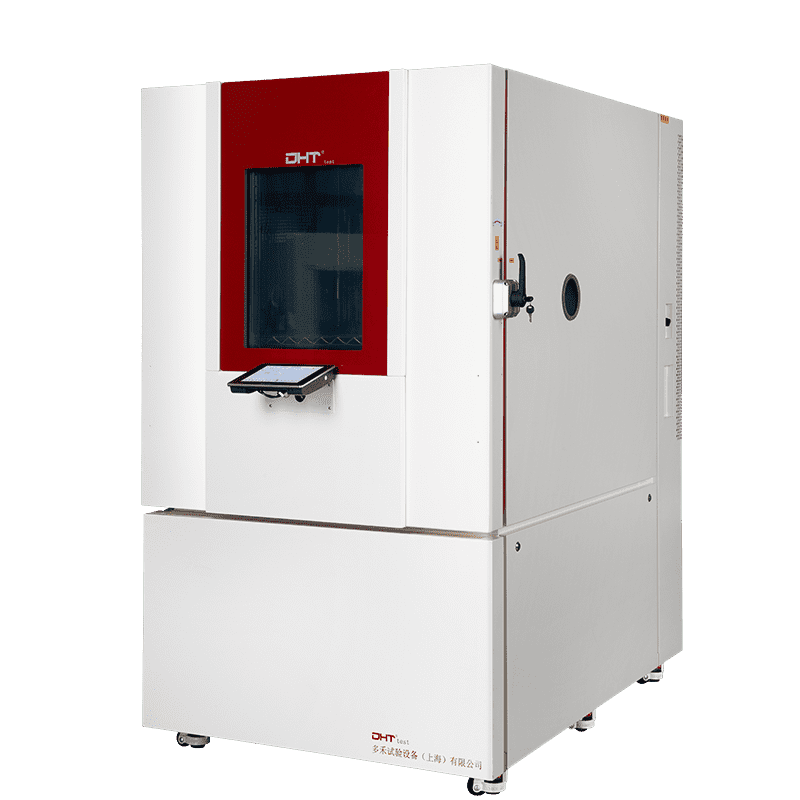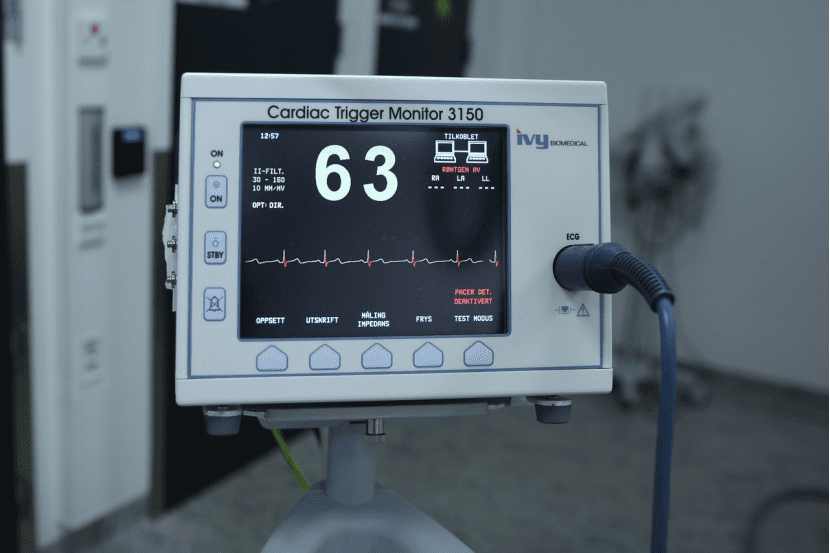Written by Robin
Senior Engineer, Doaho Test (DHT®)
Why Do Medical Electronic Devices Require Thermal Shock Testing?
In recent years, the rapid advancement of medical technology has driven the widespread adoption of electronic medical devices in areas such as clinical diagnostics, treatment monitoring, and wearable health management. These devices rely on high-performance semiconductor chips and precision electronic components to enable data acquisition, signal processing, and feedback control. As a result, their reliability and stability are directly tied to healthcare quality and patient safety.
However, during actual use, medical electronic devices are often exposed to complex environmental conditions such as abrupt temperature fluctuations, humidity variations, and repeated long-term operation. These environmental stresses can easily lead to solder joint fatigue, package cracking, or performance degradation in electronic components, ultimately affecting device stability.
Therefore, in the research, development, and manufacturing of medical electronic devices, thermal shock testing has become a critical step in verifying the reliability of the equipment and its internal semiconductor components. By simulating extreme temperature variations, engineers can detect potential issues early, optimize design and material selection, and ensure the long-term stability of medical devices.
Overview of Thermal Shock Testing and Thermal Shock Test Chambers
What is Thermal Shock Testing?
Thermal shock testing is a method that rapidly alternates between high-temperature and low-temperature environments to evaluate the performance and structural stability of electronic components or entire systems under abrupt thermal changes. Its primary objective is to simulate the extreme temperature variations that devices may encounter during transportation, storage, or clinical use, thereby uncovering latent failure risks.
What is a Thermal Shock Test Chamber?
The key equipment for conducting thermal shock testing is the thermal shock test chamber. This chamber provides precisely controlled hot and cold zones in a laboratory setting, allowing samples to experience large temperature variations within a short timeframe. Modern thermal shock chambers typically feature:
- Rapid temperature transitions – switching between hot and cold zones within minutes to replicate real-world temperature shocks.
- Accurate temperature control – ensuring fluctuations and cycles comply with international testing standards such as IEC and JEDEC.
- Safety and repeatability – enabling multiple cycles under strict protection measures to assess long-term reliability without damaging samples.
- Data recording and analysis – continuously monitoring sample temperature and system status, while generating reliable test data for R&D and quality control.
By using a thermal shock test chamber, development teams can assess solder joint strength, package integrity, material thermal expansion adaptability, and the electronic stability of medical devices under extreme conditions.
Practical Applications and Value of Thermal Shock Testing in Medical Devices
Thermal shock testing is a core reliability verification tool in the medical electronics industry, covering component screening, module validation, and system-level qualification. Its primary value lies in accelerating failure discovery, bringing potential reliability issues to light during laboratory testing rather than in clinical use, thereby establishing a robust quality safeguard.
- Component-Level Screening Following JEDEC and AEC-Q100 standards, semiconductor packages undergo severe conditions such as –55°C to +125°C thermal shock cycles. This process evaluates bond wire integrity, material adhesion, and thermal fatigue life, effectively eliminating components with latent manufacturing defects.
- Functional Module Verification At the module level, testing focuses on mechanical stresses caused by mismatched thermal expansion coefficients among different materials. Using a thermal shock test chamber, engineers can accelerate failures such as solder joint fatigue or PCB via fractures, ensuring long-term reliability in devices like defibrillators and ventilators.
- System-Level Qualification System-level testing simulates harsh real-world conditions: rapid environmental transitions for emergency equipment, sterilization processes for surgical instruments, and self-heating in high-power devices. Thermal shock testing reveals sealing failures, display malfunctions, and structural deformation, validating the overall integrity and performance stability of the complete system.
This testing has become indispensable in transitioning medical electronic devices from design to clinical application, underscoring manufacturers’ commitment to product safety and patient well-being.
Choosing the Right Thermal Shock Test Chamber
Selecting a suitable thermal shock test chamber is essential for ensuring reliable and repeatable results in medical electronic device testing. Key considerations include:
- Chamber type based on test object – Small modules or chips can be tested using general-purpose thermal shock chambers for high-frequency, precise cycles, while larger devices require custom chambers to accommodate full assemblies.
- Temperature transition speed and precision – High-performance chambers can shift from hot to cold zones within minutes while maintaining tight stability and uniformity, minimizing test errors and improving data accuracy.
- Data monitoring and traceability – Modern thermal chambers feature advanced sensors and automated controls to record thermal profiles and generate traceable reports, ensuring compliance with IEC, JEDEC, and other standards.
- Safety and ease of operation – A well-designed chamber should include safeguards such as over-temperature protection, secure door locks, and alarm systems to protect both operators and test samples.
DHT® Thermal Shock Chambers
The DHT® Thermal Shock Test Chamber utilizes rapid up-and-down transfer between hot and cold zones to deliver precise and repeatable thermal shock testing. Its compact design makes it ideal for laboratories and small-scale testing environments, while still offering high performance and ease of use. With this two-zone chamber, R&D teams can quickly replicate the extreme thermal conditions medical devices face during transport, storage, and use—detecting hidden risks early, optimizing designs, and ensuring long-term product reliability.
| DHT® Mini Thermal Shock Test Chamber(Two-Zone) | ||
| TemperatureChamberModel | Model | DHTT-27-M |
| Working Room Volume | L | 27 |
| Temperature Range | ℃ | (Pre-heating)+180 (Pre-cooling)-65 |
| ThermaShock Range | ℃ | (-40,-50,-60)~+(+80,+120,+150) |
| Heating Rate | °C/min | 2.0~4.0 |
| CoolingRate | °C/min | 0.7~3.5 |
| Temperature Fluctuation | ℃ | ±0.1~±0.5 |
| Temperature Uniformity | ℃ | 0.5~2.0 |
| Testing Mode | Lift-and-shift switching | |
| Transfer Time | S | <15 |
| Transfer Mode | Pneumatic | |
| Tempearture Recovering Time | min | 5 |
| Internal Dimensions | W(mm) | 300 |
| D(mm) | 300 | |
| H(mm) | 300 | |
| External Dimensions | W(mm) | 500 |
| D(mm) | 1100 | |
| H(mm) | 1330 | |
| Cooling Mode | Air Cooling | |
| Power Voltage | 220V±10%,50~60Hz | |
| Rated Power | 5kW | |
Conclusion
For medical electronics manufacturers, investing in a high-performance thermal shock test chamber not only helps meet international certification requirements but also strengthens product competitiveness and brand reputation. With systematic thermal shock testing, companies can ensure device stability and reliability throughout transportation, storage, and clinical use—ultimately delivering safe and trustworthy medical technologies for patients.
At the same time, specialized environmental test equipment providers such as DHT® offer high-performance, dependable thermal shock chambers along with comprehensive testing solutions. Partnering with an expert supplier enables manufacturers to efficiently conduct thermal shock testing and achieve dual assurance in both the reliability and safety of medical devices.


